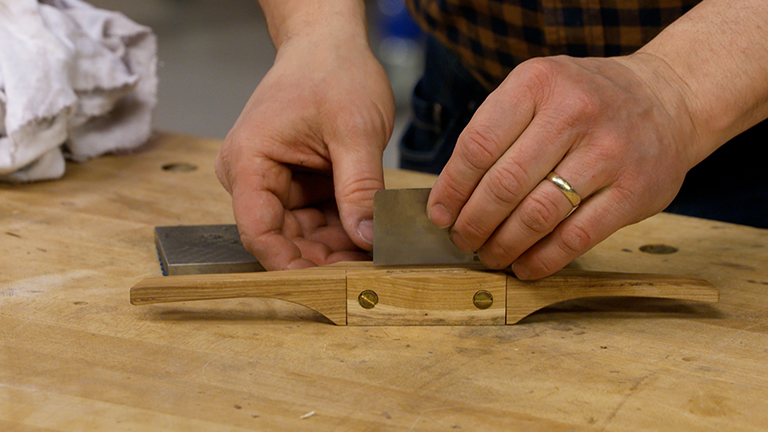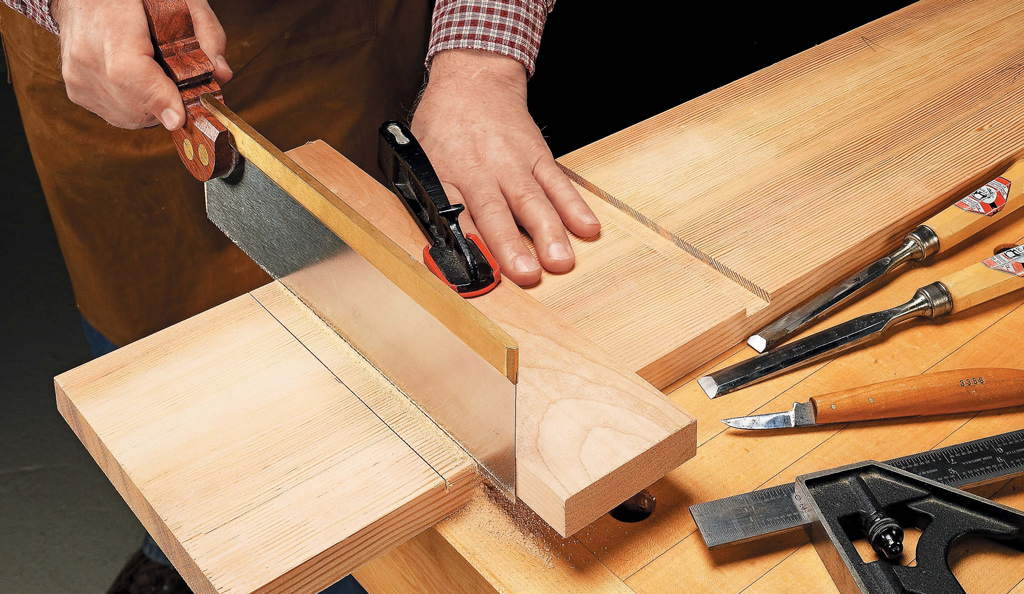
In the debate over hand tools versus power tools, my position is a simple one: Use the tool that makes the most sense for a particular task. For most woodworkers doing furniture projects, that means power tools. But even if you’re a power-tool woodworker, there are still a few hand tools you shouldn’t be without. And I don’t mean just the measuring and marking tools that we all need.
As a rule, your power tools get you most of the way toward highquality results. But a few hand tools will make them even better.
Hand tools can impart a bit of “finesse” to your woodworking projects by allowing you to work in small increments (often thousandths of an inch). And the more you use them, the more you’ll appreciate the tools and the results.
You can find most of these tools online at the websites of your favorite woodworking suppliers.
1 Card Scrapers

It’s hard to imagine a tool that provides more bang for the buck than a card scraper. This simple, flat piece of steel can smooth a workpiece quickly and leave a beautiful surface that you won’t need to touch with sandpaper. The secret is the cutting edge.
The scraper relies on a hook- shaped burr on the edge rather than a conventional, beveled blade. When properly sharpened, the hook produces wispy shavings.
Another nice thing about scrapers is that they’re available in different profiles. One common type, the gooseneck, has a round shape that can be used to smooth convex surfaces. And by simply adjusting the angle, you can scrape more than a single radius curve.
I’m not saying you should throw away your sander. But the more proficient you become with a card scraper, the more you’ll find yourself turning to it.
2 Shoulder Plane

When it comes to shaving a hair off of a tenon or cleaning up the bottom of a dado or groove, a shoulder plane is the tool for the job. There are a couple of unique features that make a shoulder plane a must-have tool.
First, the blade is just slightly wider than the body (usually only about 1⁄64"). And the blade is bedded at a low angle. This allows it to cut a crisp corner on the cheeks and shoulders of a tenon (hence the name).
Shoulder planes are sold in several sizes. I like a medium size, 3⁄4"-wide version. If you cut tenons at the table saw, you’ll appreciate how well this plane cleans them up, as shown in the photo.
3 Set of [Chisels](https://www.woodsmith.com/review/chisels-for-woodworking/)

I don’t think there can be much debate regarding the necessity of chisels — even in a power-tool shop. No matter what kind of work you do, a good set of chisels is one of the best tool investments you can make. They’re essential for fine-tuning joinery, squaring up corners, and dozens of other common tasks.
The good news is, you don’t have to spend a fortune to find a set of high-quality chisels. Several brands sold today combine value with long-lasting performance. There are a number of six-piece chisel sets for $60-80.
Look for a blade hardness of Rc58-62. This is hard enough to hold an edge well, but still soft enough to sharpen easily.
4 Ryoba Saw

No matter how confident and proficient you are at the table saw, there are plenty of cuts that are simpler and safer to make using a hand saw. And there’s a perfect combination of value and quality in a Japanese-style ryoba saw. This double-edged saw has both crosscut and rip teeth.
The steel teeth are impulse hardened, so you’ll never need to sharpen them. Instead, you can simply replace the blade.
Of course, if you prefer the Western alternative, then a couple of good back saws (one with rip teeth and the other crosscut) will serve the same purpose.
5 Block Plane

As a power-tool woodworker, I admit I was always a little bit intimidated about using a hand plane. There are so many different sizes and styles that I found it easier to simply ignore them all.
After a few years, however, I broke down and bought a block plane and I never looked back. There’s just about no limit to what you can do with a high-quality, well-tuned block plane. From shaving down a proud dovetail or box joint (using a lowangle model) to chamfering an edge, once you learn to properly set up and use a block plane, you’ll wonder how you ever got by without one.
Fortunately, it’s not hard to find a good one, either. I’d advise buying a block plane that makes it easy to adjust the depth of cut. The planes from Lie-Nielsen and Veritas for instance, incorporate easy-to-use depth controls and are ready to use out of the box.











